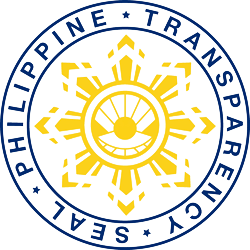1 December 2020 via EventRegist
[Acknowledgements]
Ladies and gentlemen, a good day to you all.
I hope everyone is keeping themselves safe and healthy during this COVID-19 pandemic. Thank you for joining this forum, which signals our desire to recover and invigorate business activity between the Philippines and Japan.
PH ECONOMY AND OUTLOOK
Prior to the pandemic, the Philippines boasted very strong economic fundamentals. We were growing at an average of 6.6% over the period 2016 to 2019, and we were the 3rd fastest growing economy in Asia. In 2019, our per capita GDP was at US$3,500. We were projecting to breach the US$4,000-mark and become an upper middle income country by 2020, if COVID-19 did not happen.
Our astute monetary policy enabled us to have low and stable inflation rates averaging at 3% from 2016 to 2019. Last year, we also had a strong fiscal position, whereby we achieved highest revenues and lowest debt as shares of GDP. We also had the lowest unemployment and underemployment rates last year. We even received the highest ever credit ratings in the range of BBB+ to A-.
Our strong growth was supported by the resurgence in our manufacturing sector, which nearly accounts for 20% of the Philippine economy. The average value-added grew by almost 34% for the five-year period of 2010-2014 to 2015-2019. Meanwhile, total merchandise exports were on an uptrend, hitting a positive 2.2% as of September of this year.
Despite the setbacks and challenges brought about by the pandemic, the Philippines still remains a conducive place to do business. We are also considered one of the top emerging economies and countries for investments. Reputed business magazine The Economist ranked the country as the 6th emerging economy with high financial strength. Meanwhile, the CEOWorld Magazine placed the Philippines among the top ten countries to invest in post-COVID era. Furthermore, both the World Bank and International Monetary Fund predicted a V-shaped economic recovery for the country, with forecasts of 6.2% to 6.8% respectively by 2021.
As such, we are working on rebuilding the economy’s robust growth—but this time higher than pre-COVID levels. Allow me to present to you our new industrial strategy to bolster the expected turnaround of our economy from the effects of the pandemic.
REBUILD PH!
The way forward for us is to build back better, and to stay the course to have a better future for our country. Our goal is for Filipinos to have a modern, dynamic, and responsible Philippines.
This is what our new industrial strategy is all about: the REBUILD PH or “REvitalizing BUsinesses, Investments, Livelihoods and Domestic Demand.” This strategy is aimed at jumpstarting and reinvigorating the economy by revitalizing consumption and enhancing production capacity. The two broad strategies of REBUILD are: (1) revitalize demand, and (2) empower local industries to capture the demand in the agriculture, industry, and services sectors.
On the demand side, it starts with government support via economic stimulus to save companies and keep jobs. This is important to generate income opportunities and restimulate demand that will attract more production activities and create a better business environment for investments. On the supply side, we should enhance production capacities in the agriculture, industry, and services sector to help build our export competitiveness and even manage imports.
This creates a virtuous cycle of sustained and growing economic activity with strong domestic linkages.
PH-JP BILATERAL RELATIONS AND PH ADVANTAGE
As we work to Build Back Better and build back a better Philippines, we recognize the importance of our international partners like Japan in this endeavour, not only during this pandemic but even during the post-COVID era.
With decades-long friendship and partnership, Japan continues to be one of our biggest trading partners and investors. Last year, Japan was the Philippines’ 2nd major trading partner, 2nd export market, and 2nd import supplier.
On the investment side, Japan was our 4th major source of approved investments in 2019. This rank may be a step lower than 2018 but the amount of investments actually increased. We have reviewed the list of Japanese investments in the pipeline and we are encouraged by the strong interest in the areas of manufacturing, such as wiring harness, electronics, medical devices, renewable energy, and even in retailing and infrastructure development.
At this juncture, let me reiterate why Japanese businesses should invest in the Philippines. I’ve already mentioned earlier that our economy was one of the fastest growing economies before the pandemic. It’s also poised to exhibit a sharp V-shaped recovery afterwards.
The Philippines offers a domestic market of 110M people and access to an ASEAN market that has more than 600M people. Our country also has access to key markets through our Free Trade Agreements (FTAs) with other countries and regions, as well as the US Generalized System of Preferences (GSP) and the EU Generalized Scheme of Preferences Plus (GSP+).
Our young, educated, and tech-savvy labor force stands at 49M and produce around 750,000 annual graduates with wage rates among the most stable in the region, and a big part of it are science and techology and engineering graduates. This resource, I believe, is critical in responding to the challenges and opportunities of the digital and inter-connected new economy.
As a manufacturing hub, the increase of manufacturing cost in the Philippines is more stable compared to neighboring ASEAN countries such as Vietnam, Thailand, and Malaysia. Our country also has one of the lowest wage levels for manufacturing workers and engineers. The annual wage increase of the Philippines is relatively steady at 4.6% compared to other countries at 7.0%. These are projected to be at the same level in 2020. Equally important, employers who exhibit commitment to their workers will reap the benefit of a low turn-over rate in the Philippines, which has one of the lowest in the region. Companies will also enjoy industrial peace in our country, as strikes average less than ten in a year.
I’d also like to point out that the Philippines has risen in the Global Innovation Index (GII) 2020 to 50th out of 131 countries coming from 54th in 2019. This is the first time that the Philippines has reached the top 50 position. Moreover, the GII recognizes the country as an innovation achiever for the second year in a row. From 2014, we were just in the 100s and now we are in 50th rank. I think our next target of 43rd rank is achievable and we are committed to achieve this goal.
I would also like to highlight that during the pandemic period, the Philippines did not impose import nor export restrictions. In fact, the importation of health equipment and supplies deemed critical or needed to address the COVID-19 public health emergency was given exemption from duties, taxes, and fees under Republic Act No. 11469 or the “Bayanihan to Heal as One Act.” Import requirements—as well as application and registration processes for needed medical supplies and equipment, as well as protective gear deemed as COVID-19-critical commodities—were also streamlined.
The Philippine government has also assured that the movement of cargo and people remain unhampered during the pandemic. We assisted Japanese and other foreign manufacturers and exporters at the height of the lockdowns to enable them to continue their factory operations.
OPPORTUNITIES
With all of these factors, the Philippines is a strategic partner for Japan in the manufacturing industry for electronics, automotive, aerospace and chemicals. Other preferred areas are in the manufacture of healthcare products such as medical devices, personal protective equipment (like surgical masks, medical coveralls), pharmaceuticals, food, packaging and construction materials (like iron and steel) including cement. We also welcome new Japanese investments in shipbuilding and infrastructure projects where there is government push thru President Rodrigo Roa Duterte’s “BUILD, BUILD, BUILD” Program.
For services, we have a track record of collaboration with Japan in animation, engineering and architectural design. There are also areas of opportunity for Japanese investments in logistics, smart manufacturing, electronics design services and Internet of Things (IoT). We are excited as well for prospects in terms of future collaboration with Japan in video game development, software development, conventional and renewable energy, retirement infrastructure (like retirement villages), and smart city development.
CONCLUSION
As we navigate a fast-changing world that forecasts an unstable future for many businesses, we invite our Japanese partners to work with us in facing the challenges of the “New Normal” head on. However, instead of just adjusting to this “New Normal,” let us instead create a “Better Normal.”
Despite the pandemic and natural calamities, we are extra bullish now that our two nations are part of the recently signed Regional Comprehensive Economic Partnership (RCEP) that would lead to stronger trade, investment, and economic ties between our two countries. The close geographic proximity and natural friendly ties between our governments and our people have sustained both our nations through tough times.
Indeed, through this strong collaboration, we have produced world class products and services exported all over the world and critical to the global supply chain of numerous industries. We have also produced together world class animation, the biggest ships and cargo vessels, as well as important components for automotive and consumer electronics. Included here now are those components critical for medical devices needed in the ongoing fight against COVID-19.
I am confident that our continued partnership will result in better products and services as we aim for a quick recovery from this pandemic. More importantly, your support will help to generate more jobs and employment in the Philippines, which would provide a better and more comfortable quality of life for all Filipinos. This, in turn, will even strengthen the bonds of friendship between our two countries.
As you explore trade and investment opportunities and pursue expansion strategies, we invite you to partner with us. WE WILL MAKE IT HAPPEN FOR YOU IN THE PHILIPPINES.
Thank you very much, arigatou gozaimasu, and mabuhay po tayong lahat! ♦
Date of Release: 01 December 2020



